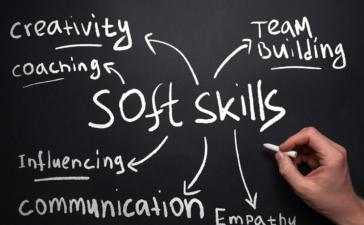In the realm of healthcare, hospice care stands out as a critical service that ensures comfort and dignity for patients in the final stages of their lives. As technology continues to advance, integrating artificial intelligence (AI) and machine learning into hospice care is not just a futuristic concept but a present-day reality transforming the way care is delivered.
This blog explores the profound impact of AI and machine learning on hospice care solutions, detailing their applications, benefits, and the future potential of these technologies in enhancing patient care and operational efficiency.
The purpose of this blog is to provide a comprehensive understanding of how AI and machine learning are revolutionising hospice care solutions, offering insights into current applications, case studies, challenges, and future prospects.
Understanding AI and Machine Learning in Healthcare
AI refers to the simulation of human intelligence processes by machines, particularly computer systems. Machine learning, a subset of AI, involves the use of algorithms and statistical models to enable computers to improve their performance on a specific task with data-driven learning.
Artificial Intelligence (AI) is a broad term that refers to machines designed to mimic human cognitive functions such as learning and problem-solving. Machine Learning (ML), a subset of AI, is an application that allows systems to learn from data, identify patterns, and make decisions with minimal human intervention.
Differences Between AI and Machine Learning
While AI encompasses the broader scope of mimicking human intelligence, machine learning focuses on the ability of machines to learn from data and improve over time without explicit programming.
AI is the overarching concept where machines are capable of carrying out tasks in a smart way, while ML is the specific technique that feeds machines data and uses statistical methods to help them learn how to get progressively better at a task.
Applications of AI and Machine Learning in Healthcare
AI and machine learning have found extensive applications in healthcare, from diagnostic imaging and drug discovery to personalised treatment plans and administrative automation.
In healthcare, AI and ML are used in various applications such as diagnostic imaging, where they help in the detection of diseases, drug discovery, where they assist in finding new drugs and treatments, and personalised treatment plans, where they tailor healthcare services to individual patient needs. These technologies also play a crucial role in automating administrative tasks, reducing human error, and increasing efficiency.
The Need for AI and Machine Learning in Hospice Care
Challenges Faced in Traditional Hospice Care:
Traditional hospice care faces numerous challenges, including limited resources, difficulty in monitoring patients continuously, and the need for personalised care plans that adapt to changing patient conditions.
Hospice care is often challenged by limited resources, difficulty in providing continuous patient monitoring, and the need for care plans that can adapt to the changing conditions of patients. These challenges can lead to suboptimal patient care and increased stress for healthcare providers.
How AI and Machine Learning Can Address These Challenges:
AI and machine learning can revolutionise hospice care by offering solutions like real-time patient monitoring, predictive analytics for patient health trends, and personalised care plans that adapt to the patient’s needs.
By integrating AI and ML, hospice care can overcome these challenges. AI can provide real-time patient monitoring, ensuring that any changes in a patient’s condition are promptly detected and addressed. Predictive analytics can help in foreseeing potential health issues, allowing for proactive care. Personalised care plans can be created and adjusted in real-time, catering to the unique needs of each patient.
Benefits of Integrating AI and Machine Learning in Hospice Care:
- Improved patient outcomes through continuous monitoring and personalised care.
- Enhanced operational efficiency by automating routine tasks.
- Better resource management and allocation.
The integration of AI and ML in hospice care brings numerous benefits. It improves patient outcomes by ensuring continuous monitoring and personalised care. It enhances operational efficiency by automating routine tasks, allowing healthcare providers to focus more on patient care. It also helps in better resource management, ensuring that resources are used where they are needed the most.
Key Areas Where AI and Machine Learning are Making an Impact
Patient Monitoring and Management:
- Remote Monitoring Systems: AI-powered devices can continuously monitor patients, alerting caregivers to any significant changes in their condition.
AI-powered remote monitoring systems can continuously track a patient’s vital signs and health status, alerting caregivers to any significant changes. This allows for timely interventions and reduces the risk of complications.
- Predictive Analytics for Patient Health Trends: Machine learning algorithms can analyse patient data to predict potential health issues, enabling proactive care.
Machine learning algorithms can analyse vast amounts of patient data to identify patterns and predict potential health issues. This enables caregivers to provide proactive care, addressing issues before they become serious.
Personalised Care Plans:
- Tailored Treatment Plans Based on Data Analysis: AI can analyse vast amounts of patient data to create customised care plans that cater to individual needs.
AI can analyse patient data to create personalised care plans tailored to the unique needs of each patient. These plans can be adjusted in real-time based on the patient’s condition, ensuring optimal care.
- Adjustments to Care Plans in Real-Time: Machine learning enables care plans to be adjusted dynamically based on real-time data, ensuring optimal patient care.
Machine learning allows care plans to be dynamically adjusted in real-time based on the latest patient data. This ensures that patients receive the most appropriate care at all times.
Operational Efficiency:
- Optimising Resource Allocation: AI can help in efficiently allocating resources such as staff, equipment, and medication, ensuring that they are used where needed the most.
AI can optimise resource allocation by analysing data and determining the best way to use resources such as staff, equipment, and medication. This ensures that resources are used efficiently and effectively.
- Automating Administrative Tasks: Routine tasks like scheduling, billing, and documentation can be automated, freeing up healthcare professionals to focus on patient care.
AI can automate routine administrative tasks such as scheduling, billing, and documentation. This reduces the workload on healthcare providers, allowing them to focus more on patient care.
Challenges and Ethical Considerations
Data Privacy and Security Concerns:
The use of AI in hospice care involves handling sensitive patient data, making data privacy and security paramount. Ensuring robust data protection measures is crucial to maintain patient trust.
AI and ML involve handling large amounts of sensitive patient data, raising concerns about data privacy and security. It is crucial to implement robust data protection measures to maintain patient trust and comply with legal regulations.
Ethical Dilemmas in AI Decision-Making:
AI decisions in healthcare can sometimes lead to ethical dilemmas, especially when it comes to end-of-life care. Balancing technological recommendations with human empathy and ethics is essential.
AI decision-making in hospice care can lead to ethical dilemmas, particularly in end-of-life care situations. It is important to balance technological recommendations with human empathy and ethical considerations, ensuring that patients receive compassionate and respectful care.
Overcoming Resistance to Technology Adoption in Hospice Care:
Resistance to new technology from both healthcare providers and patients can be a barrier. Continuous education and demonstrating the benefits of AI can help in overcoming this resistance.
There may be resistance to adopting new technology from both healthcare providers and patients. Continuous education and demonstrating the tangible benefits of AI and ML can help in overcoming this resistance and ensuring successful implementation.
Future Prospects of AI and Machine Learning in Hospice Care
Emerging Trends and Technologies:
Future trends include the development of more sophisticated AI algorithms, integration of AI with other technologies like IoT, and advancements in predictive analytics for more precise care.
Emerging trends in AI and ML include the development of more sophisticated algorithms, integration with other technologies like the Internet of Things (IoT), and advancements in predictive analytics. These trends promise more precise and effective hospice care solutions.
Potential Advancements and Innovations:
Innovations such as AI-driven virtual assistants for patient support, advanced predictive models for disease progression, and personalised medicine tailored by AI are on the horizon.
Potential advancements include AI-driven virtual assistants for patient support, advanced predictive models for disease progression, and personalised medicine tailored by AI. These innovations will further enhance the quality of hospice care.
Long-Term Impact on the Hospice Care Industry:
In the long term, the integration of AI and machine learning will lead to more efficient, effective, and patient-centred hospice care, ultimately enhancing the quality of life for patients and easing the burden on caregivers.
In the long term, the integration of AI and ML will lead to more efficient, effective, and patient-centred hospice care. This will enhance the quality of life for patients and reduce the burden on caregivers, ensuring that hospice care continues to evolve and improve.
Adopt AI for Better Hospice Care: Improve Patient Outcomes Today
AI and machine learning are transforming hospice care software solutions by improving patient monitoring, personalising care plans, and enhancing operational efficiency.
These technologies hold the potential to significantly enhance the quality of hospice care, ensuring that patients receive the best possible care in their final days.
The healthcare industry must embrace AI and machine learning to harness their full potential and ensure that hospice care continues to evolve and improve.





